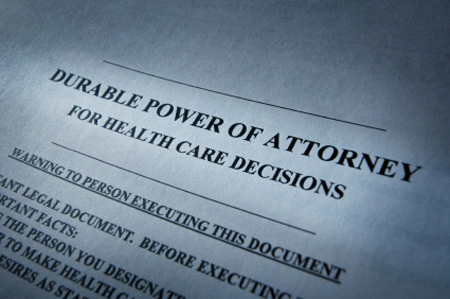
We’ve previously discussed how to address choking in adults. Today, we address the twin horrors of needing to save a baby’s life (those younger than 12 months old) from choking and how to help yourself if no one else is around to help.
In case you didn’t realize it, infants haven’t had time to accumulate enough disease and toxins to have heart attacks in the way adults do. When they are in a life-threatening situation, it’s far more likely to be from a respiratory cause, such as choking. Infants and young children are exploring their world and seemingly will place most anything near or in their mouths. Too often this leads to choking. Please keep this in mind if you’re ever faced with an infant in danger.
In discussing how to help a child in danger, let’s focus on two considerations: how to assess the situation and how to act.
It is vital to assess these situations accurately. There are important splits in treatment algorithms based on your assessment.
Simply put, the first thing you want to do is determine the infant’s level of responsiveness. For the purposes of this discussion, let’s assume we’re discussing conscious choking.
If an infant is suddenly unable to cough or cry, it’s a reasonable to assume that something may be blocking the airway.
- When this is the case, help will be needed getting the object out.
If an infant is coughing or gagging, it’s likely that the airway may be partially blocked.
- Coughing is actually the most effective way to dislodge an object, so you shouldn’t interfere in this setting.
If an infant is somewhat responsive in the context of a recent insect bite, bee sting or other possible allergic exposure, the throat could be closing because of an allergic reaction.
- When this is the case, you are facing a potential life-threatening emergency. Call 911 immediately.

When you’ve made your assessment, your next step (unless you’re performing CPR, calling 911 or the child is still coughing) is to try to assist in getting the object out. Think “back blows, chest thrusts, repeat unless the infant gets unconscious.” Yes, that was meant to be a jingle.

Back blows:
- Hold the infant face up on one forearm, and hold the back of his head with the hand.
- Stabilize the infant’s front with your opposite hand and forearm.
- Flip the infant face down so that he’s now in the control of the other forearm. Use your thumb and fingers to stabilize the jaw while flipping. Lower your arm onto your thigh; now the baby’s head will be lower than his chest.
- Using the heel of your hand, deliver five firm back blows between the infant’s shoulder blades in an effort to dislodge the object. Maintain head and neck support by firmly holding his jaw between your thumb and forefinger.
- Finally, place the hand that had been delivering the back blows on the back of the baby’s head with your arm along his back. Carefully, turn him over while keeping your other hand and forearm on his front.
- If you have dislodged the object and the infant is responsive and/or coughing, you are done. Otherwise, proceed to chest thrusts.

Chest thrusts
- Use your thumb and fingers to hold his jaw while sandwiching him between your forearms to support his head and neck. Lower your arm that is supporting his back onto your opposite thigh, still keeping the baby’s head lower than the rest of his body.
- Place the pads of two or three fingers in the center of the baby’s chest, just below an imaginary line running between his nipples. To do a chest thrust, push straight down on the chest about 1 1/2 inches. Then allow the chest to come back to its normal position.
- Do five chest thrusts. Keep your fingers in contact with the baby’s breastbone. The chest thrusts should be smooth, not jerky.
Repeat
Continue alternating five back blows and chest thrusts until the object is forced out, the infant starts to cough forcefully, cry, breathe on his own or becomes unconscious. If he’s coughing, allow him to do so.

If the infant becomes unconscious
If a choking infant becomes unconscious, you should proceed to modified CPR as follows:
- Open his mouth. If you can see an object, remove it with your little finger.
- Give two rescue breaths. If you don’t see the chest rise, tilt his head and try two rescue breaths again.
If his chest still doesn’t rise, do 30 chest compressions.
- Check the mouth again, looking for an object. Remove it if seen.
- Repeat the cycle with rescue breaths and chest compressions until help arrives.
Regardless of the outcome, the infant will need prompt medical attention.
Feel free to ask your SMA expert consultant any questions you may have on this topic.
Take the #72HoursChallenge, and join the community. As a thank you for being a valued subscriber to Straight, No Chaser, we’d like to offer you a complimentary 30-day membership at www.72hourslife.com. Just use the code #NoChaser, and yes, it’s ok if you share!
Order your copy of Dr. Sterling’s new books There are 72 Hours in a Day: Using Efficiency to Better Enjoy Every Part of Your Life and The 72 Hours in a Day Workbook: The Journey to The 72 Hours Life in 72 Days at Amazon or at www.72hourslife.com. Receive introductory pricing with orders!
Thanks for liking and following Straight, No Chaser! This public service provides a sample of what http://www.SterlingMedicalAdvice.com (SMA) and 844-SMA-TALK offers. Please share our page with your friends on WordPress, like us on Facebook @ SterlingMedicalAdvice.com and follow us on Twitter at @asksterlingmd.
Copyright © 2018 · Sterling Initiatives, LLC · Powered by WordPress


















